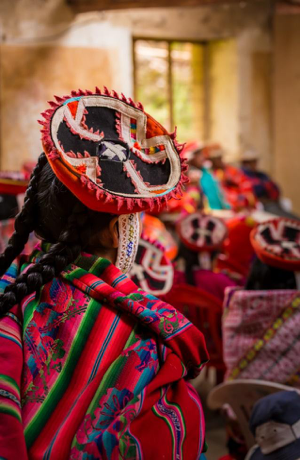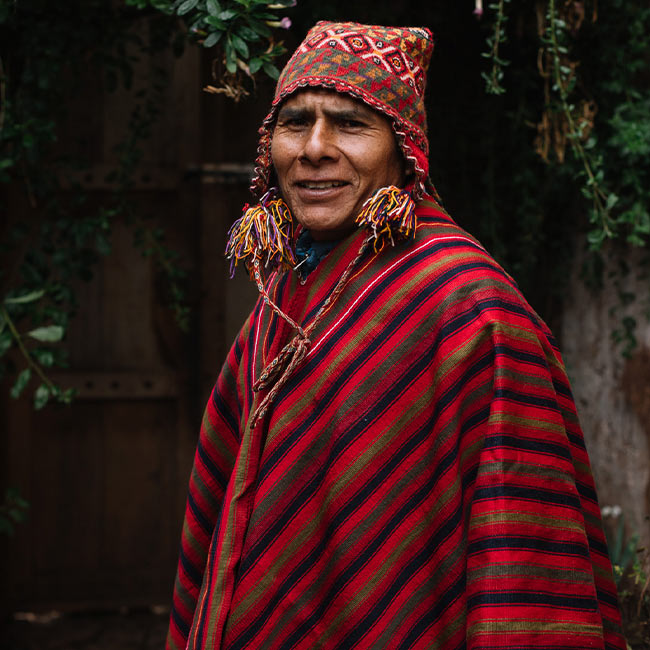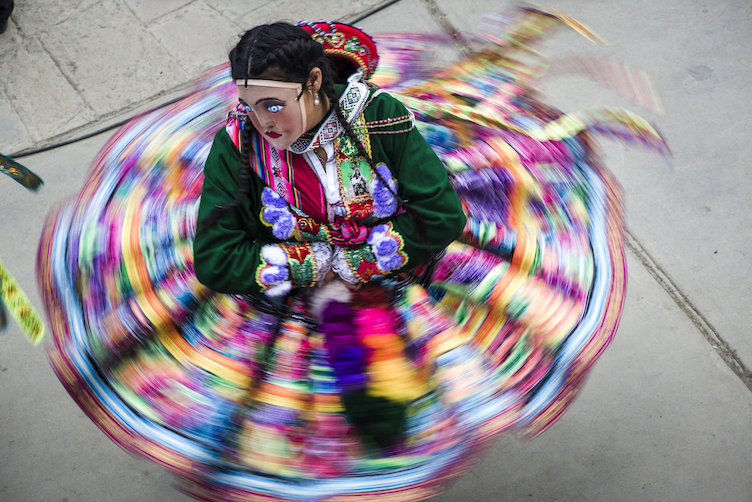Although the Andes mountains span the South American continent from Venezuela to Patagonia, the term “Andean culture” is typically reserved for the peoples that were once part of the Inca Empire in the Central Andes. Concentrated mostly in the highlands of Peru and Bolivia, these peoples developed unique traditions, art, and architecture, many of which are still visible today.
Of these, perhaps the most discernible is that of traditional Peruvian clothing. Though you may come to Peru to see the infamous stonework of the Inca at Machu Picchu, you’d be hard-pressed not to notice the bright, colorful and distinctive clothing worn by some of the locals while you’re here. For me at least, it was a completely unexpected aspect of my travels, one that inspired a host of questions, among which the history of this style was chief.
The longer I stayed in Peru, the more I realized how complex that history was. Like so much of the Andean culture, I learned that some Peruvian clothing is exclusively Incan, others are a blend of Incan and colonial traditions, and the true origins of many of the pieces are highly contested.
If you’re any bit as captivated as I was by the incredible Peruvian outfits that you’ll find in the Andes mountains, here’s everything that I’ve learned about 5 of the most prominent pieces you’ll see.
1. Lliklla

The lliklla is easily confused with the awayu/k’eperina as well as the unkuna. Whereas the lliklla is intended to keep women warm in the cold mountain air, the awayu is larger, knotted at the front and used to carry babies or goods that are sold on the street. The unkuna is smaller than both and is used to carry food or snacks.
Also known as a manta, lliklla is the Quechua word for a rectangular, shawl-like piece of fabric that Andean women wear. The brightly colored shawl wraps around the upper back and shoulders and is fastened in the front using either a safety pin or a more traditional tupu, which is a decorated pin.
There is evidence that the lliklla was worn in pre-Hispanic times, and several examples were found at various Inca burial sites in Peru. However, the colonial era brought Chinese silk and Spanish silver thread to the New World, and these were woven into various design motifs. The design motifs themselves also changed, and European decorative themes were weaved alongside those of the Inca.
2. Pollera
Polleras, also called sayas, are pleated, one-piece, typically black skirts that are decorated with colorful designs and bright stitching. The design and style of a pollera is usually indicative of the community that a woman is from. These skirts are worn layered and on special occasions, such as traditional festivities, women may wear more than 10 of them at a time.
Although these skirts are most associated with the rural indigenous populations of Peru and Bolivia, they’re actually a relic of the colonial era. Between the 16th and 17th centuries, the Spanish hacienda owners imposed this colonial dress upon the indigenous women. They were traditionally handwoven with wool but now they’re made by machine and purchased.
3. Montera
Monteras are the hard-to-miss, wide-brimmed hats worn by women in the Andes. Sometimes flat, they’re more often shaped something like a fruit bowl and decorated with bright colors.
The woven strap that fastens the hat under the chin is called the sanq’apa in Quechua, and these are also heavily decorated, usually with beads. Like the pollera, the design and style of a montera indicate what community, village, or region a woman is from.
The montera is a pre-Inca item of traditional Peruvian clothing, though the theories of their origin range. Some believe that the montera is an ancient symbol of status and wealth, noting that the Inca nobility and upper classes wore hats to distinguish their position in society. Others believe that the montera alludes to ancient religious beliefs because its shape resembles the golden disk and rays of light that are used to depict the sun god, Inti.

4. Chumpi
Chumpi is a Quechua term for a belt, though these woven yarn belts are far more intricate and involved than the typical buckled belt we use in the Western world. Tied and cinched around the waist, women and men use them to fasten their clothing and men sometimes use a chumpi to support their lower back while carrying heavy loads. More interestingly though, the term chumpi has its origins in ancient Andean mysticism.
The Q’ero nation is considered the last living direct descendants of the Inca and they’re a wealth of Incan spiritual beliefs and practices. For them, a chumpi is one of five invisible belts around each human body, which are a source of energy and perception, something like the chakra system in the Hindu tradition. Chumpi belts, then, can be worn around the waist or the womb in order to filter and balance the energy field of the body.

5. Chullo
The chullo is probably one of the most iconic pieces of traditional Peruvian clothing. These are the pointed hats with earflaps that are often decorated with colorful pom-poms on their tops and long cinches.

Sported only by men and boys, chullo’s are traditionally handwoven from vicuña and alpaca, though they can also be made with llama and sheep’s wool. They’re used for warmth in the cold highlands of the Andes mountains and, like polleras and monteras, their colors and patterns tell of the community the wearer is from. As for their origins, some believe that the modern form of the chullo is a result of colonial influences on Andean culture, while others believe the chullo is ancient.
Historian Arturo Jimenez Borja contends that pre-Hispanic Andean people wore a four-pointed Huari hat with ear flaps before colonization. He believes that those traditional Andean ear flaps were added to the beret that was worn in the Basque country of Spain and brought to the New World, making the chullo an amalgamation of both cultures. On the other hand, some academics believe the chullo existed as it does today for thousands of years before colonization.
Make Your Own Traditional Peruvian Clothing with Curios
One of the best parts of venturing into the Peruvian highlands is experiencing the Andean culture. The distinct architecture, art, and traditions of this culture permeate all parts of the landscape and the people who live here. And besides the Inca stonework that lines the streets and borders the mountainsides, the traditional clothing worn by locals is the most irrefutable evidence that this culture is still very much alive and well.
Want to learn more about the ancient practices that go into making a piece of traditional Peruvian clothing? Join us at the House of the Chullo in Chinchero, where we’ll take you through the step-by-step process of making an ancient Andean hat.



